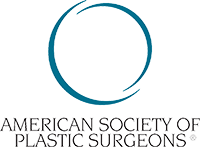Fat grafting, also called autologous fat transfer, is emerging as a new breast reconstruction technique. In fat grafting, fat tissue is removed from other parts of your body – usually your thighs, belly, and buttocks – by liposuction. The tissue is then processed into liquid in a lab and injected into the breast area to recreate the breast.
Another form of fat grafting, called lipofilling, has been used for a number of years to fix minor differences in the shape, balance, or position of the reconstructed breast compared to the other breast. Since that has worked well, doctors thought they might be able to rebuild a whole breast using fat.
It’s important to know that because fat grafting is so new, no large clinical studies have been done on the procedure. The studies that have been done involve fewer than 100 women and the average follow-up time is less than 4 years.
It’s also important to know that in many cases, the fat injected into the breast area may be reabsorbed by the body over time and the breast may lose some volume. This is why some plastic surgeons initially may add more fat than you think you need.
In one type of fat grafting procedure, an external tissue expander – called a Brava device – is worn for several weeks before and after the fat grafting. The Brava device is like a bra with plastic cones for cups. The cones put suction on the breast area to expand the tissue and create a matrix for the fat to live in. Wearing the Brava device seems to be important for the reconstructed breast to maintain its volume. In one study, women who didn’t wear the Brava device as directed had their breast volume decrease nearly twice as much as women who wore the Brava device.
Depending on the size you would like your reconstructed breast to be, you may have to have multiple fat grafting procedures that are done over a period of 2 to 6 months.
The benefits and risks of fat grafting
The advantages of fat grafting are:
- using your own tissue instead of an implant
- fat is removed from an area where you don’t want it
- both the liposuction and the fat injections are done with local anesthetic; they’re not major surgical procedures and involve only a few days recovery in most cases
- many women report that a fat-graft-reconstructed breast has sensation and feels soft, much like a natural, unreconstructed breast
The disadvantages of fat grafting are:
- no large clinical studies with long-term follow-up have been done on fat grafting; while small studies report good results, we don’t know if this technique will work for all women and we also don’t know how long the results will last
- depending on which surgeon you choose to do the procedure, you may be required to wear the Brava device or another type of external tissue expander for 4 or more weeks before the fat injections and for several weeks after
- the injected fat may be reabsorbed by the body and you may lose some breast volume over time
- because some fat cells can stimulate cell growth, some doctors are concerned that fat injected into the breast area may cause dormant breast cancer cells to grow; research needs to be done to see if this concern is valid
- some of the fat injected into the breast area may die, which is called “necrosis;” symptoms of necrosis may include pain and bleeding, the skin turning dark blue or black, numbness, fever, and sores that ooze a bad-smelling discharge or pus

